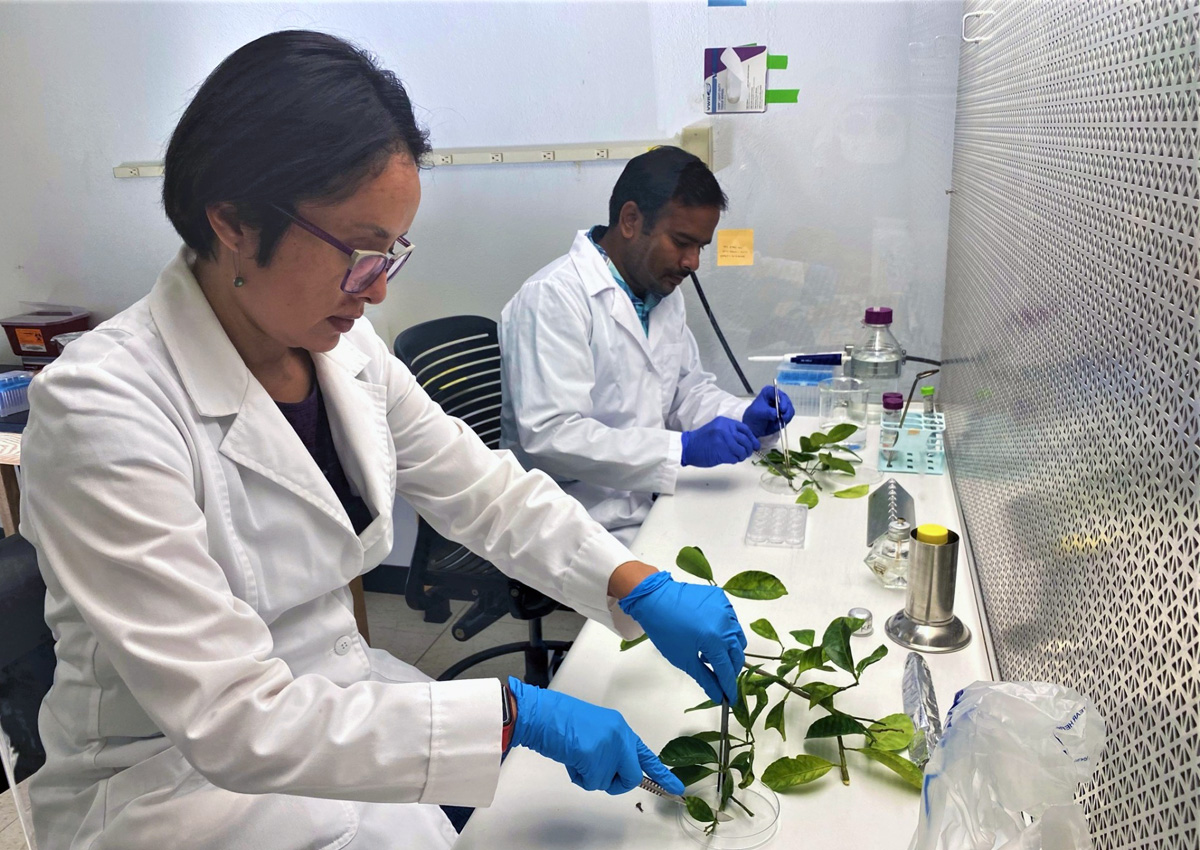
Texas AgriLife Makes Breakthrough in Fight Against Plant Diseases
November 18, 2020| |
Researchers from Texas A&M AgriLife have made a discovery that will help fight fastidious pathogens costing U.S. agriculture billions of dollars annually. For years, research scientist and associate professor Dr. Kranthi Mandadi and his colleagues at the Texas A&M AgriLife Research and Extension in Weslaco have been working on developing new biological technologies to fight fastidious or "unculturable" pathogens. Now they have developed a new screening method to expedite solutions for citrus greening and other ‘fastidious' diseases.
Fastidious plant pathogens infect citrus, tomatoes, potatoes, grapes, peppers, and other crops. They are often transmitted by insect vectors and cause billions of dollars of damage each year. Examples of these diseases are citrus greening and Pierce's Disease in grapes, the No.1 threat to the $1 billion wine industry in Texas.
The breakthrough came in the form of the "hairy root" system, a technology that uses the pathogen-infected host tissues to produce so-called hairy roots that can serve as biological vessels for the propagation of these pathogens in the laboratory. Microbial hairy roots appear similar to normal root tissues that develop from the plant and mimic a bacterium's natural environment, allowing the growth of the fastidious pathogens in controlled laboratory conditions. Hairy root cultures are easy to produce in the laboratory, are at least four times faster than conventional screening methods, and are scalable.
For more details, read the article in AgriLife Today.
| |
You might also like:
- Researchers Make Breakthrough in Understanding Citrus Greening Bacteria
- Researchers Find New Clues on How to Stop Spread of Citrus Greening
- Researchers Discover Citrus Greening Affects Roots First
Biotech Updates is a weekly newsletter of ISAAA, a not-for-profit organization. It is distributed for free to over 22,000 subscribers worldwide to inform them about the key developments in biosciences, especially in biotechnology. Your support will help us in our mission to feed the world with knowledge. You can help by donating as little as $10.
-
See more articles:
-
News from Around the World
- International Rescue Brings Syria's Seed Collection Back to Svalbard
- OFAB-Kenya Celebrates Media's Contribution to Promoting Agri-biotech
- Extra Gene Pairs and Biological Clock Control Important Plant Functions
- Texas AgriLife Makes Breakthrough in Fight Against Plant Diseases
- Honduran Farmers Attest to GM Maize Benefits
- Bansal Leads Initiative to Evaluate ~22,000 Wheat Accessions
- Australian OGTR Invites Public Comments on GM Clover Field Trial
- Pakistan's Agriculture Industry Remains Open for Biotech Opportunities
- Virtual Tech Forum to Tackle Environmental Impact of GM Crops
-
Research Highlights
- More Clues on the Mystery of Fast-evolving Genes Found in ‘Junk DNA'
-
Plant
- Report Forecasts Healthy Growth for Gene Editing Market
-
Health
- Chemists Discover Structure of Key SARS-CoV-2 Protein
-
Read the latest: - Biotech Updates (April 24, 2024)
- Gene Editing Supplement (April 24, 2024)
- Gene Drive Supplement (February 22, 2023)
-
Subscribe to BU: - Share
- Tweet

